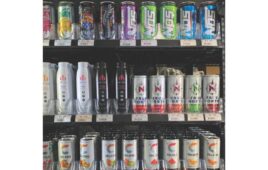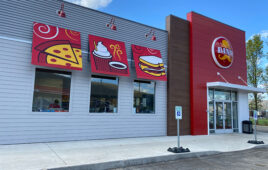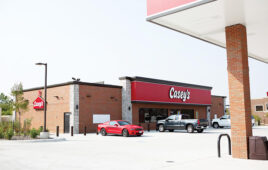Line extensions and Americans’ unremitting thirst for energy and variety continue to power the energy drink category.
Convenience store sales of energy drinks totaled $8.4 billion in 2017 and the segment is expected to register a compound annual growth rate (CAGR) of 3.6% during the period 2018-2023, according to market research firm Mordor Intelligence. The market for these beverages has experienced robust growth in recent years as consumers have sought alternatives to carbonated soft drinks.
While soda sales have steadily declined as more Americans shun sugary drinks, they continue to turn to energy drinks as a pick-me-up.
Retail sales of energy drinks in the U.S. have spiked 25% since 2012 to $11.7 billion last year, according to Euromonitor International data.
“Energy drinks continue to have healthy growth, while energy shots have flattened out a bit,” said Gary Hemphill, managing director of research for Beverage Marketing Corp. (BMC) in New York City. “Overall refreshment beverages have seen slower growth in 2017 than in 2016.” BMC expects continued solid growth in energy drinks, and likely continued softness in shots.
BRAND LOYALTY
“I would say we do fairly well with energy drinks,” said David Kraning, president of the four-unit K&B Kwik Stop in Pocatello, Idaho. Interestingly, he compared the category’s consumer dynamics to those of pipe tobacco.
“We have our customers who are brand loyal, and then you’ve got your customers who are price loyal,” Kraning observed. “You’ve got the ones who are diehard Monster fans and nothing else, and then you’ve got others for Rockstar, which is very competitively priced. Almost every other week, it seems they are running on special, and you can get Rockstar around $1.39.”
Monster Beverage Inc. has been enjoying stellar market momentum.
“We believe that Monster is increasingly benefiting from trade-down,” agreed Vivien Azer, managing director and senior research analyst for Cowen and Co. “Our cautious view on the lower-income consumer keeps us constructive on share gains in core energy.”
K&B Kwik Stop is able to maintain that favorable pricing because its area Monster distributor offers pallet purchasing.
Energy is Monster’s biggest sales driver—Java, Rehab, Ultra, Hydro and Mutant are several of the top-selling Monster brands—but the company also offers tea, juice, water, coffee and zero-calorie energy drinks. It’s planning to expand coffee and juice flavors in 2018.
K&B stores dedicates six of its 12-14 cooler doors to energy drinks, soda, waters and non-alcoholic non-dairy beverages.
“I would say probably about 20% of it’s dedicated to energy,” said Kraning. “I think that as they introduce new flavors and new things it might go up a little bit. We might try and fit in a few more facings, and maybe cut down on facings of other things.”
Kraning credited beverage companies with keeping the momentum going through continual line extensions. “They are always introducing new flavors and tweaking things.”




